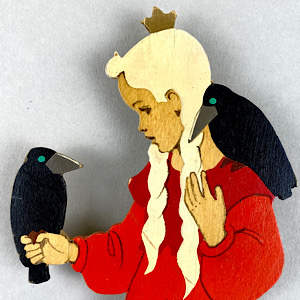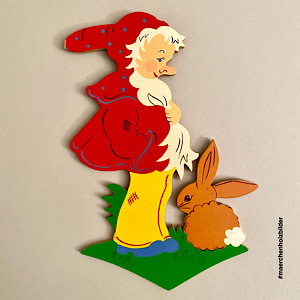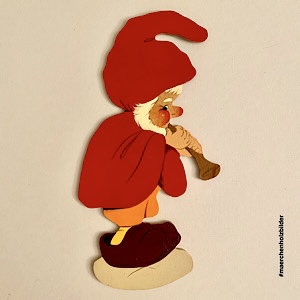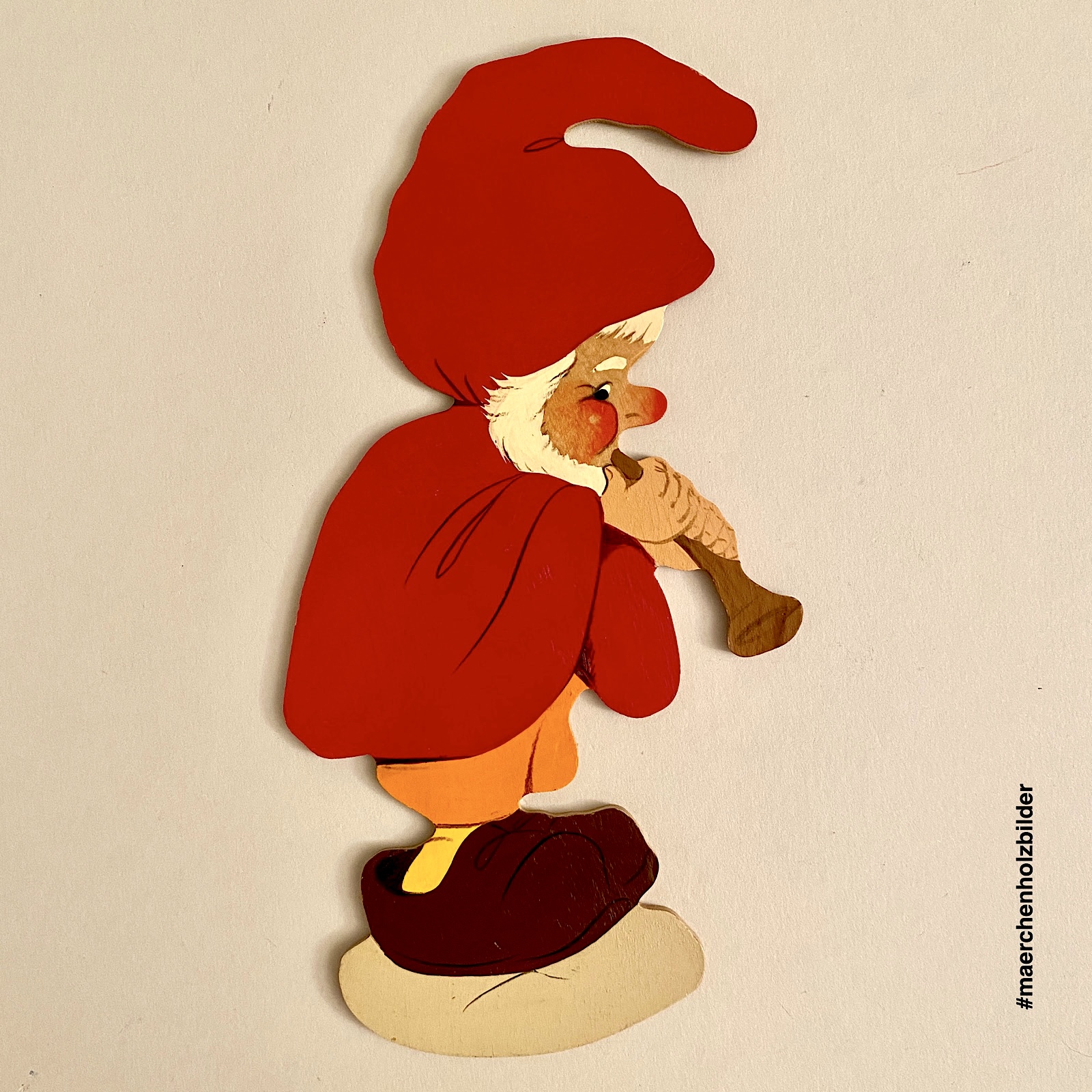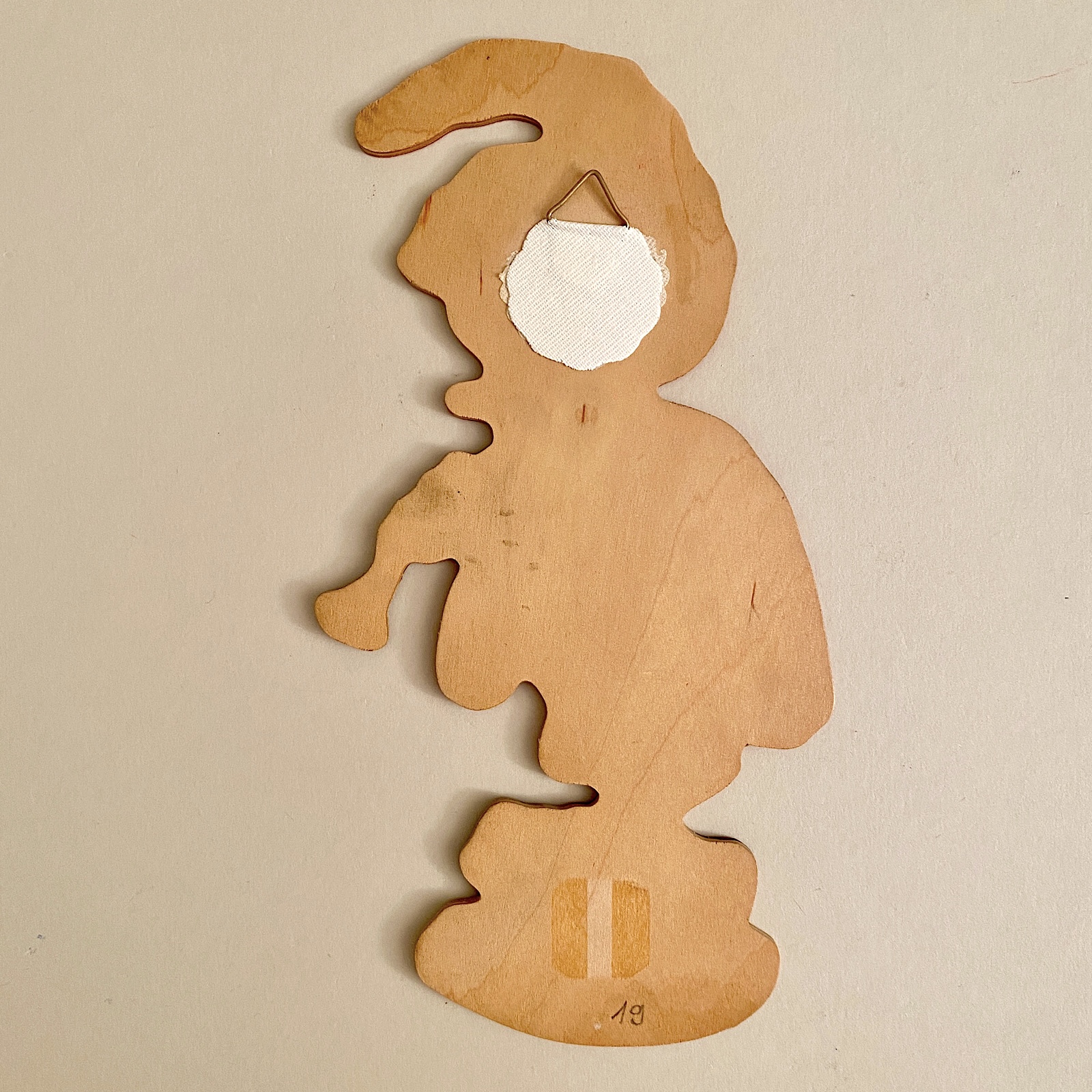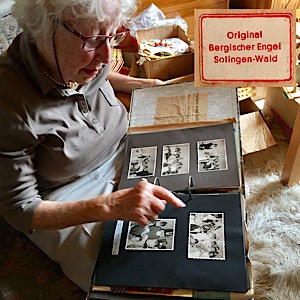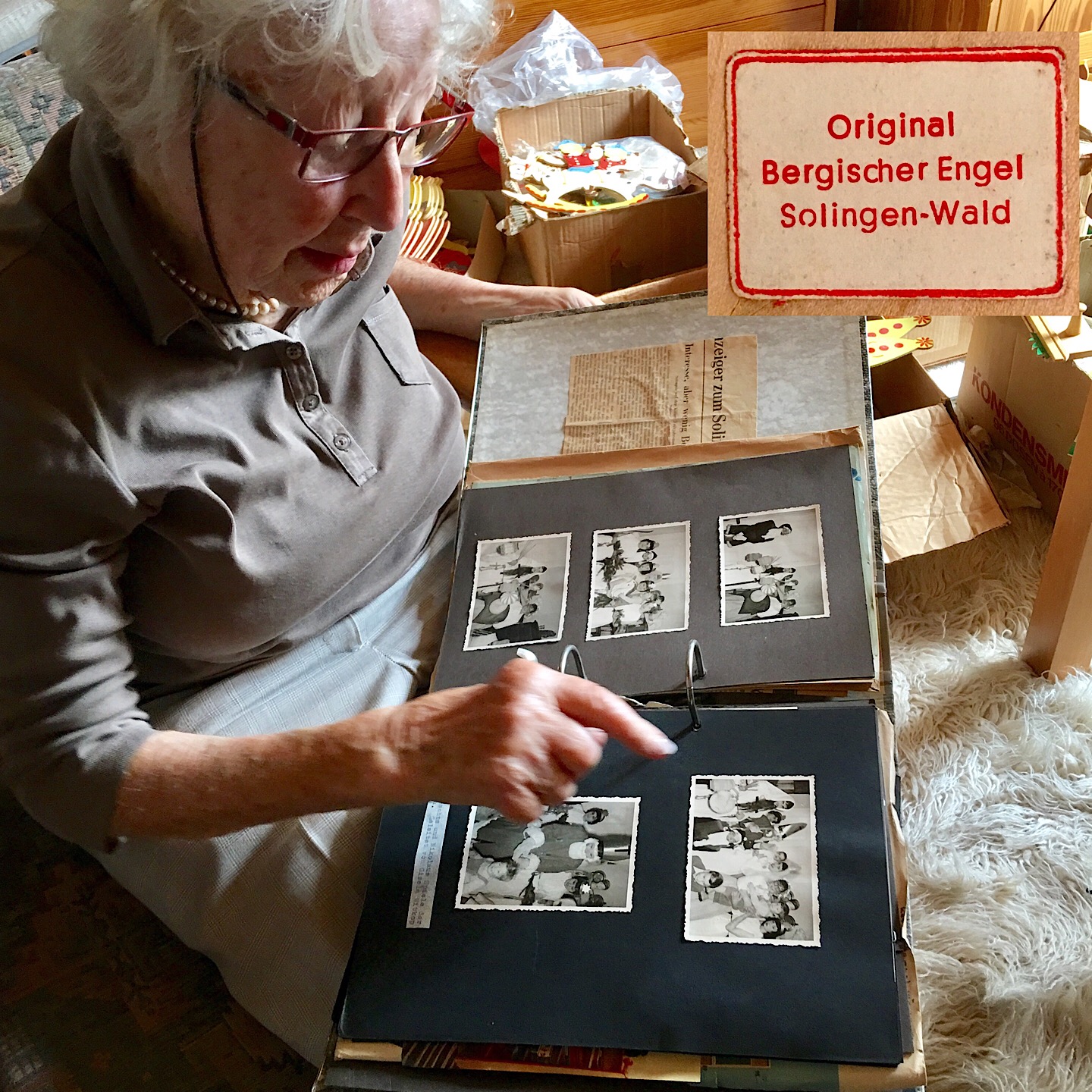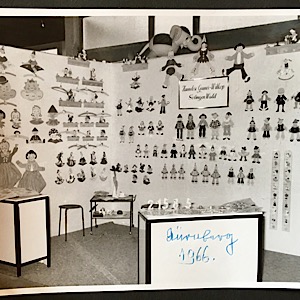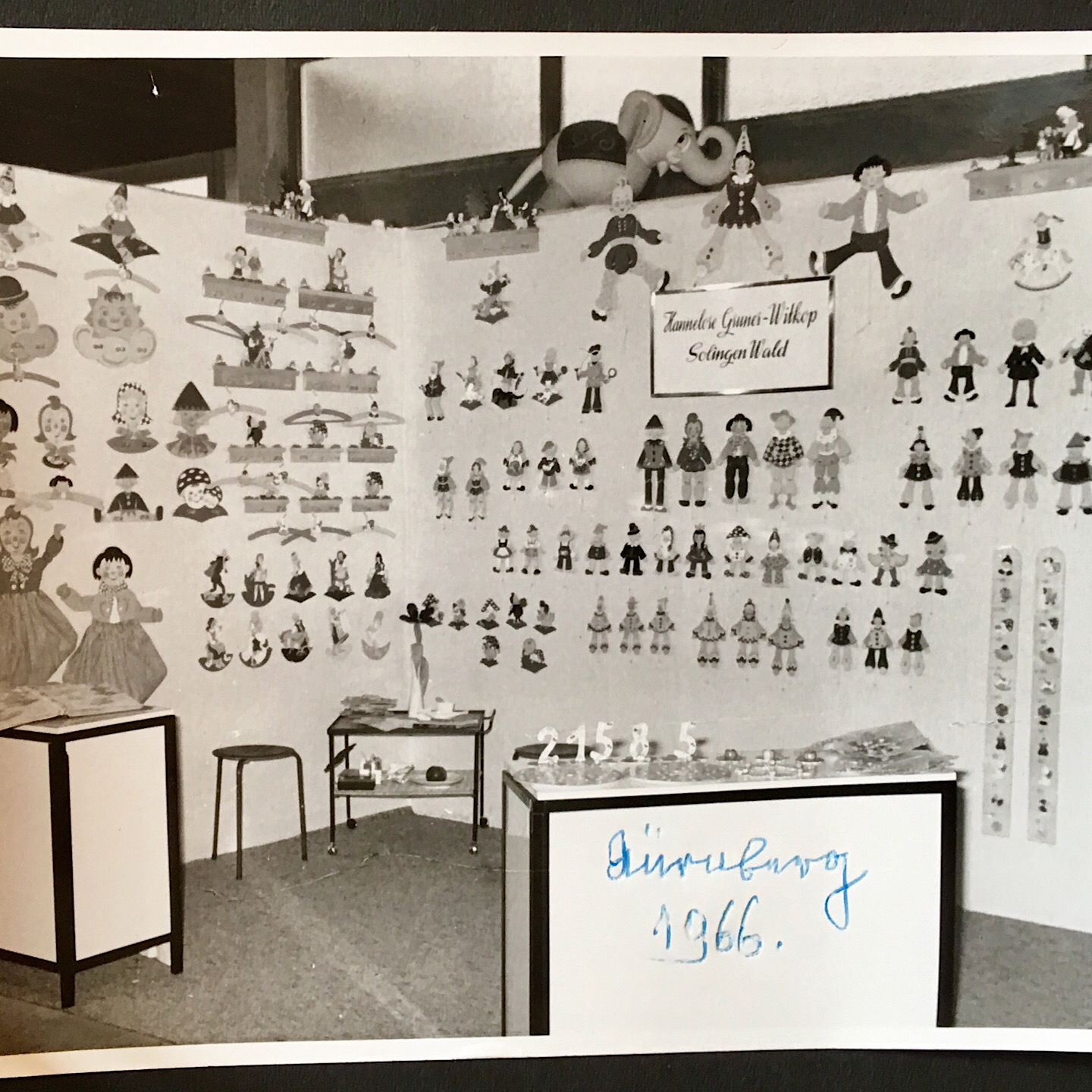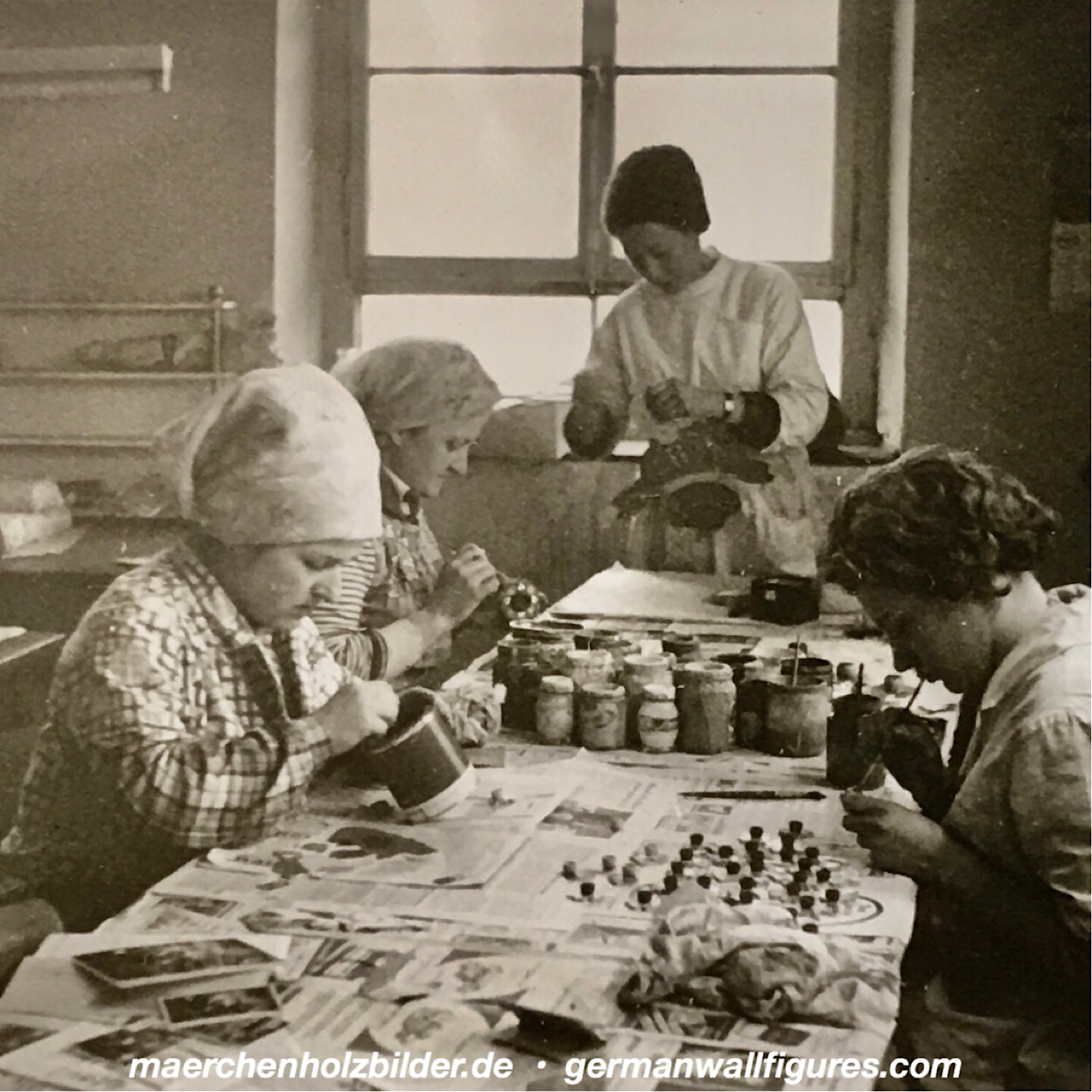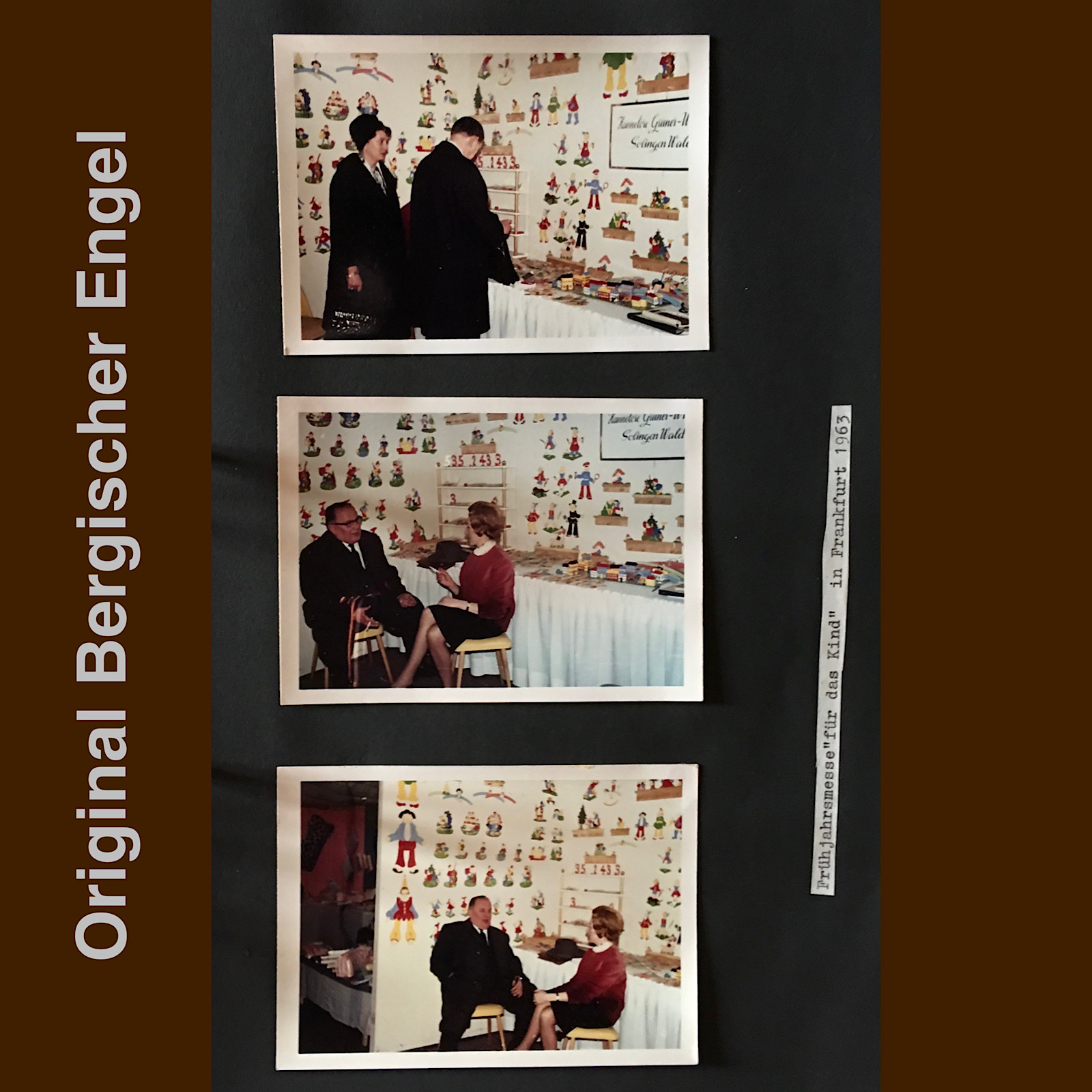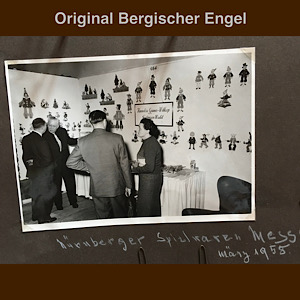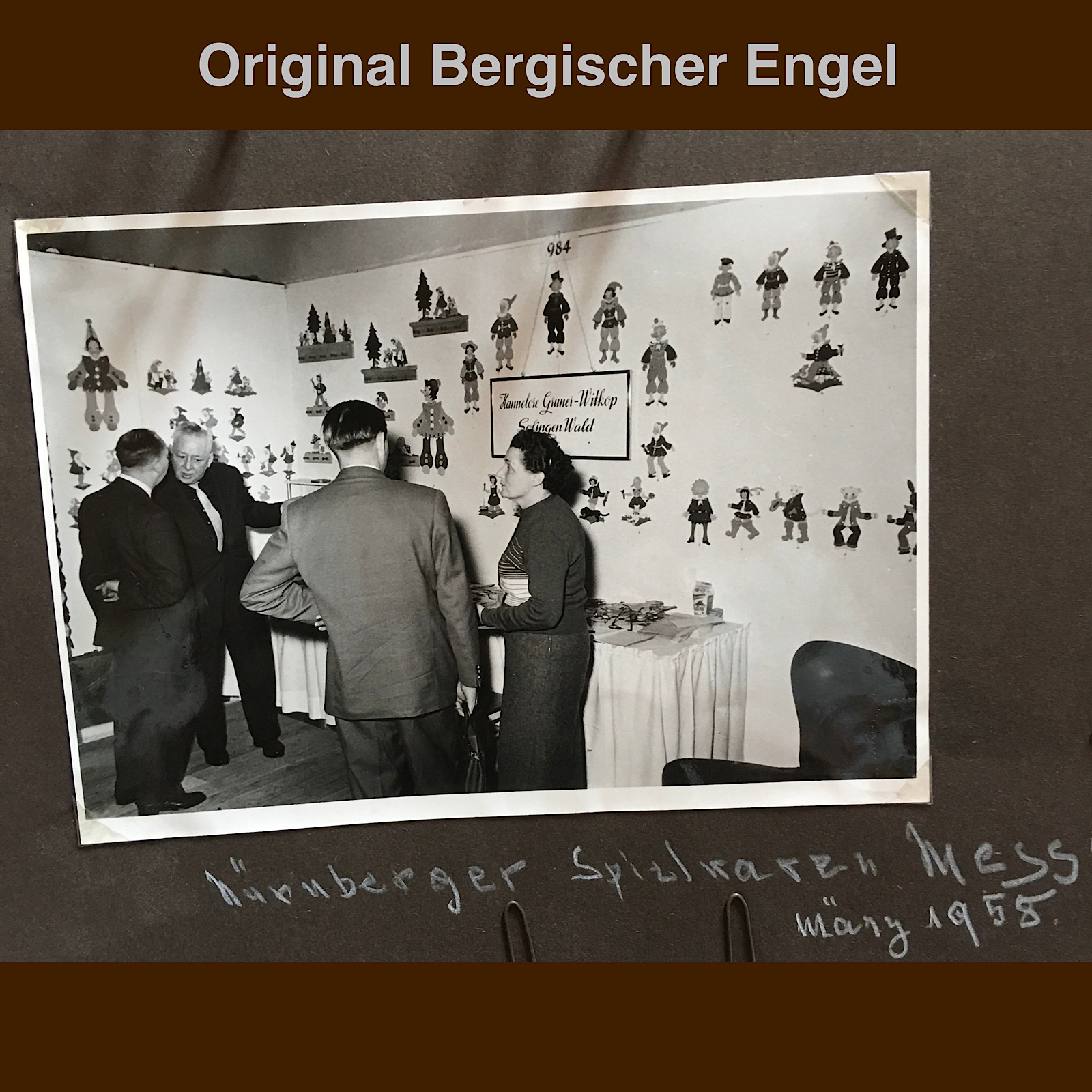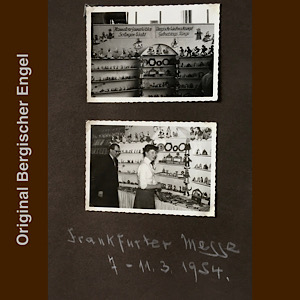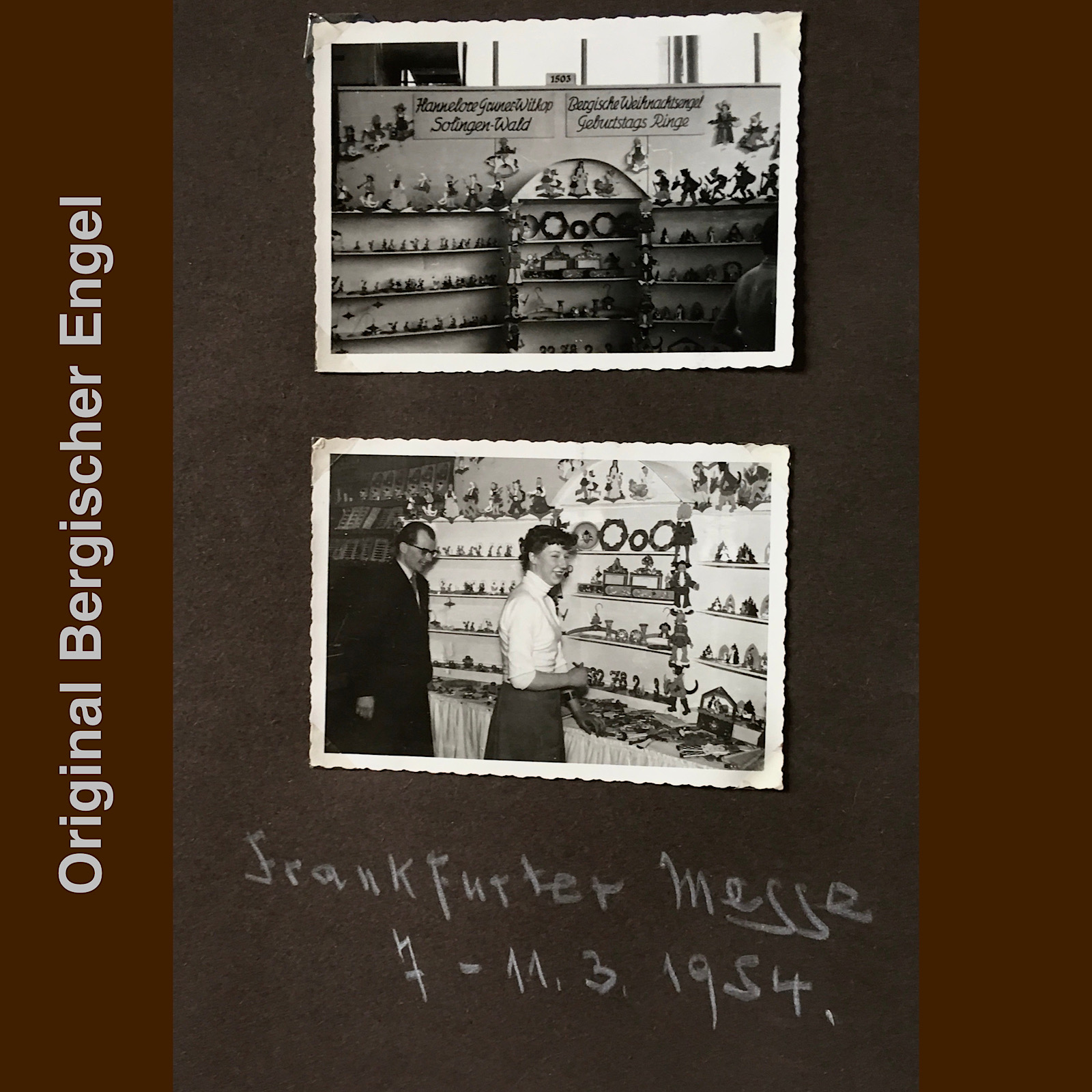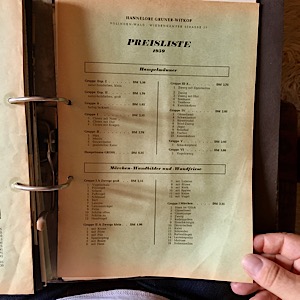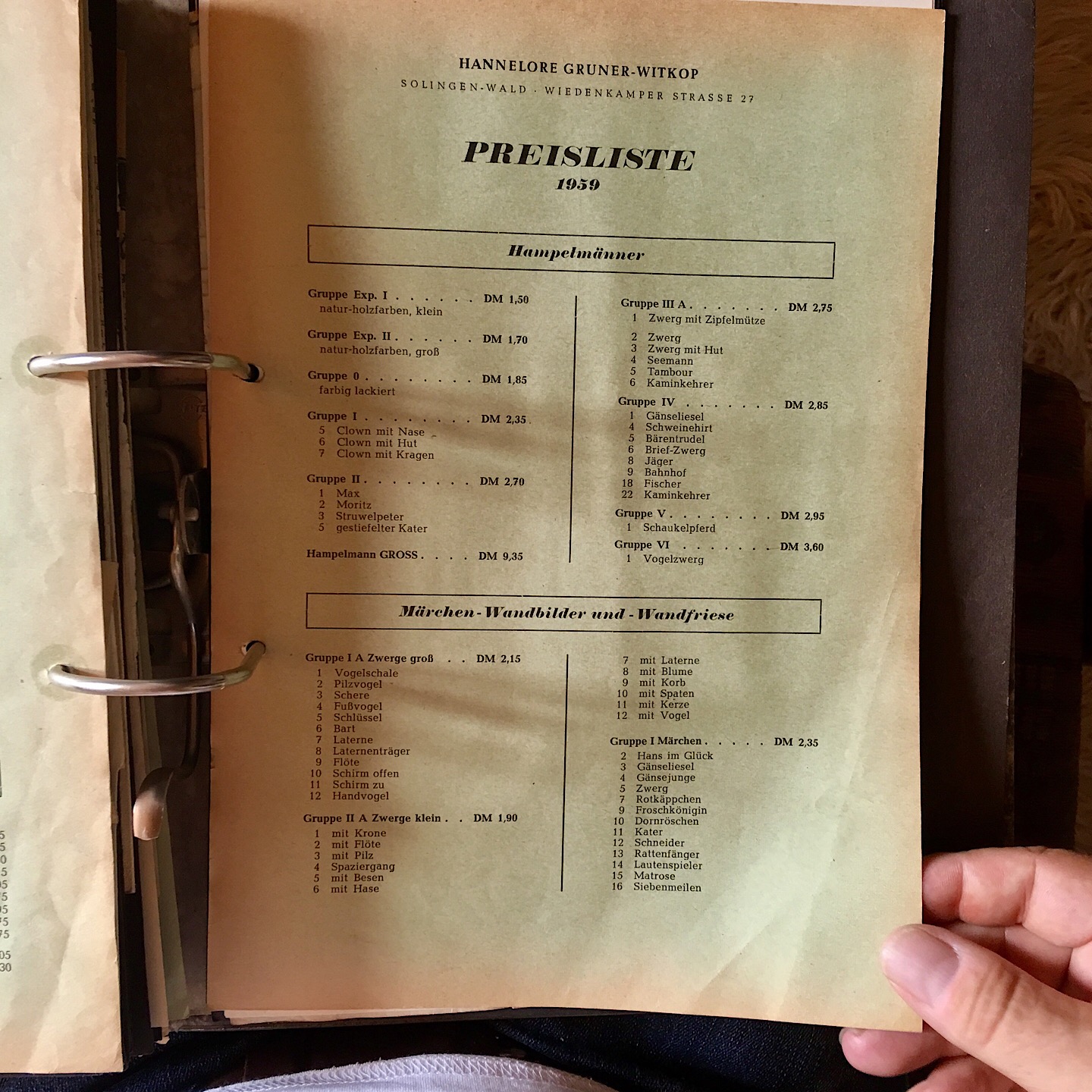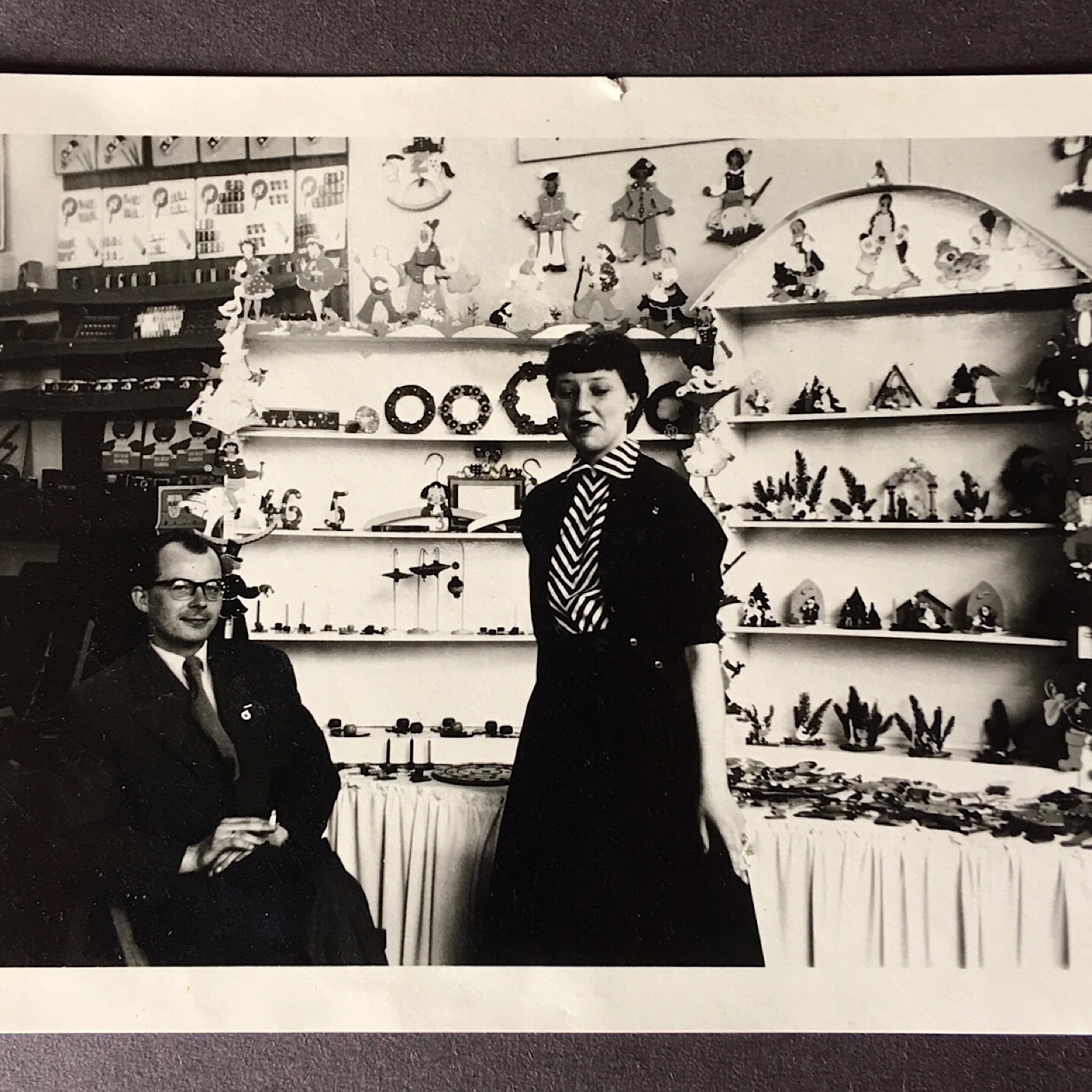1950er Original Bergischer Engel: Niedlicher Hasenzwerg mit Punktekappe, 18 cm, Märchen-Holzbild 🇬🇧 1950s Original Bergischer Engel: Cute Bunny Dwarf with Polka Dot Cap, 18 cm, German Wall Figure
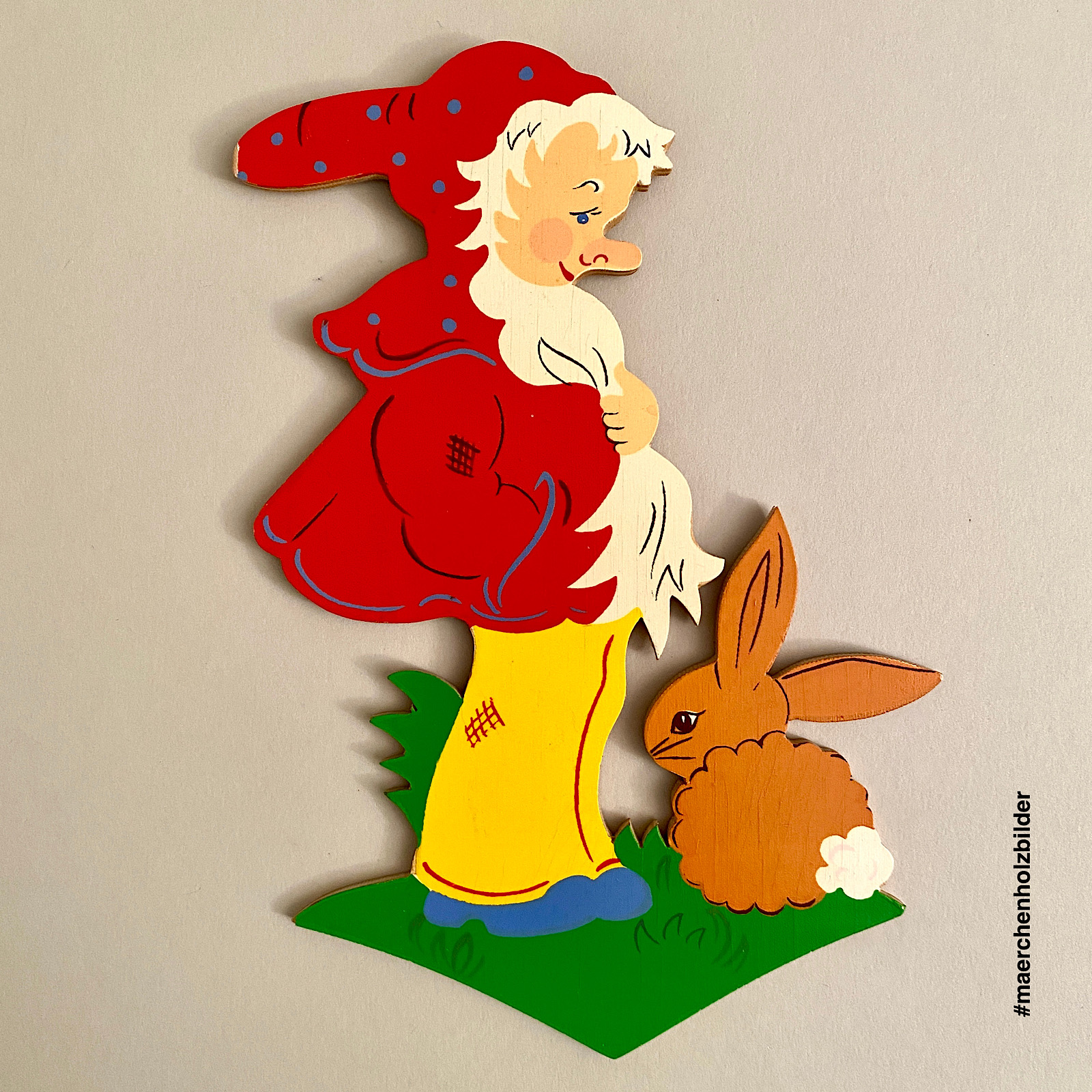
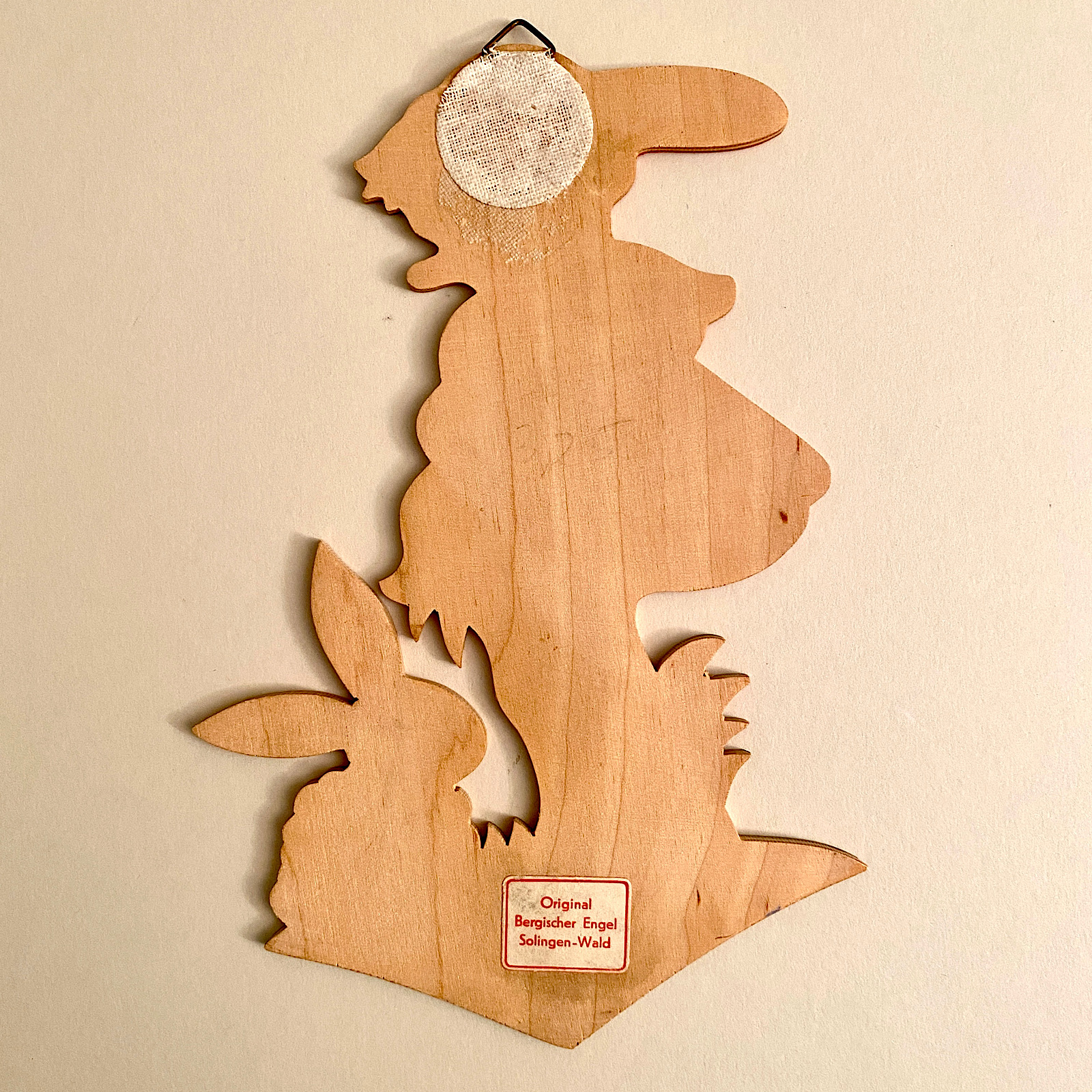
ZWERGE MIT TIEREN: Die Kombination von einem Zwerg und einem niedlichen Tier war auf den alten Märchen-Holzbildern sehr beliebt. Alfred Mertens zum Beispiel hatte gleich mehrere Wichtel-Serien mit Tieren: Zwerg mit Reh, mit Fuchs, mit Maus, mit Schmetterling, mit Eichhörnchen oder mit Vogel. Auch Grossmann, der Zwergen-Experte, kombinierte viele seiner Wichtel mit Tieren, zum Beispiel das frühe, noch ganz handbemalte Holzbild mit dem Pfötchen gebenden Fuchs. Beim Vorlagen-Hersteller Graupner waren Motive wie zum Beispiel „Beim Walddoktor“ und „Der Vogeldoktor“ sehr beliebt, wo ein Zwerg die Tiere liebevoll versorgt: Er verbindet das Bein eines Rehs oder gibt einem erkälteten Vogel mit einem Löffel Medizin.
🇬🇧 DWARFS WITH ANIMALS: The combination of gnome and animal on German Wall Figures was very popular back then. Alfred Mertens, for example, had several series with this combination: Dwarf with Doe, Dwarf with Fox, Dwarf with Mouse, Dwarf with Butterfly, Dwarf with Squirrel, or Dwarf with Bird. Grossmann, the dwarf expert, also combined many of their gnomes with animals. For example, there is a cute mid-century figure of a fox giving paw. The template producer Johannes Graupner/Graubele had some pretty motifs in store, too: “At the Forest Doctor’s” shows a dwarf fixing a doe’s injured knee, and “The Bird Doctor” has a dwarf spoon-feeding medicine to a bird with a cold. (Buch/25)
